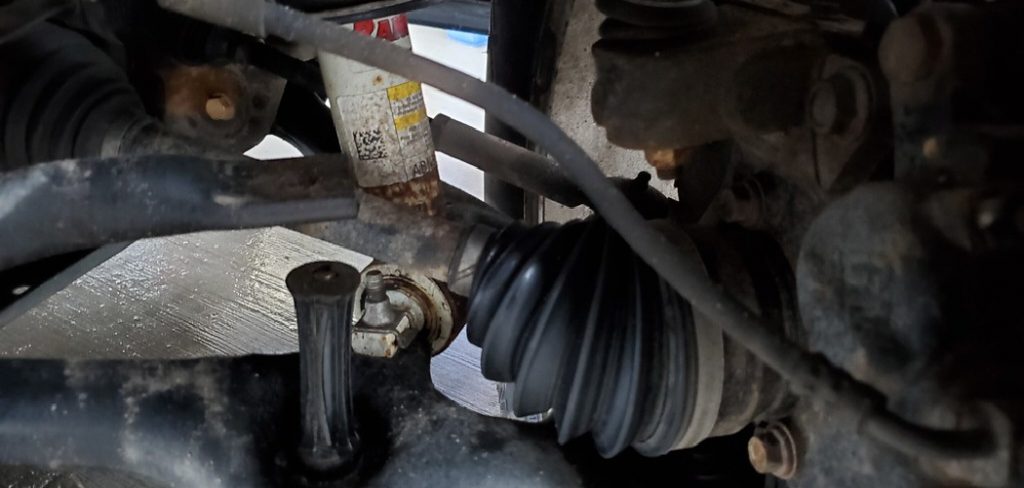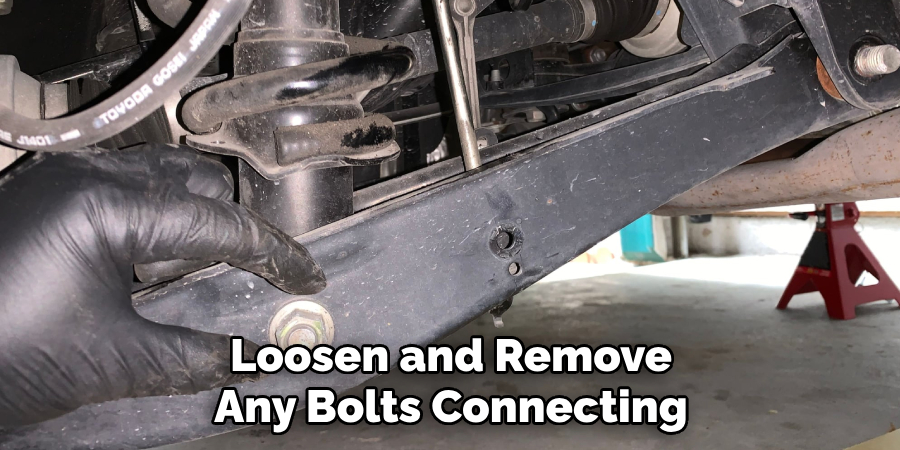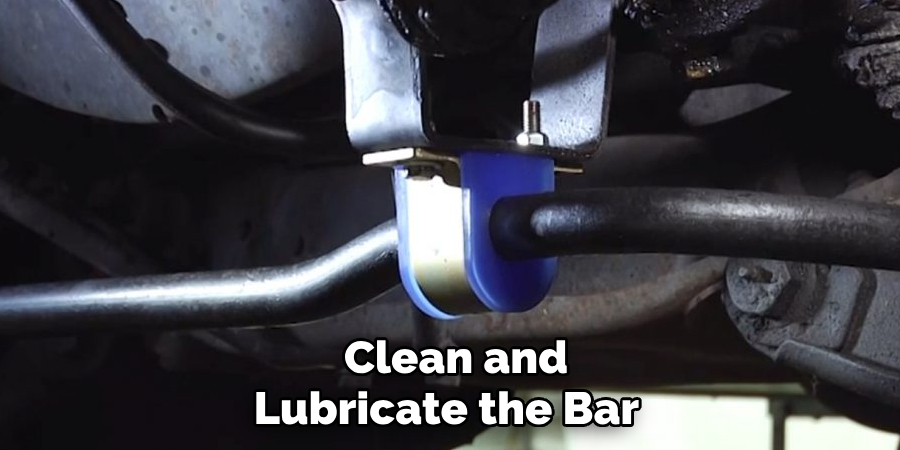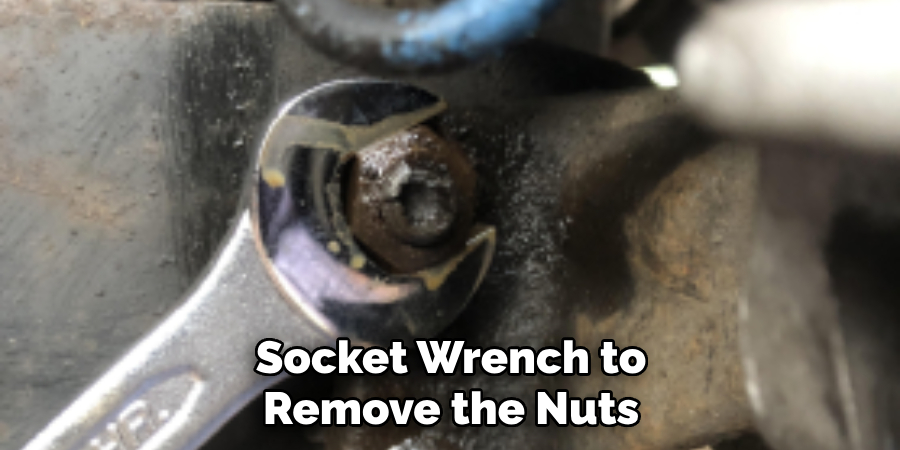Whether you’re looking to improve your off-road performance on the trails or modify the handling of your daily driver, disconnecting or removing your front sway bar is an easy way to transform the way your vehicle handles.
A front sway bar, also known as an anti-roll bar, connects the left and right sides of a vehicle’s suspension which helps reduce body roll during turns. However, this also limits how far your vehicle’s suspension can travel on each side independently.

Removing this connection allows for increased suspension articulation, giving your tires better overall traction on rough or uneven surfaces. In this blog post, I will provide a step-by-step guide on how to disconnect sway bar.
Why May You Want to Disconnect Sway Bar?
1 . To Improve Off-road Performance
If you’re an avid off-roader, disconnecting the sway bar can be a great way to improve your vehicle’s suspension and handling. A disconnected sway bar gives each wheel more independence, allowing for better articulation over uneven terrain. Also, by disconnecting the sway bar, you can increase your vehicle’s overall ground clearance.
2. To Prevent Sway Bar Damage
In some off-roading situations, having a disconnected sway bar can prevent damage to the bar itself. With increased articulation, there is less strain on the sway bar and its mounting points. This can be especially useful if you’re tackling rough terrain or steep inclines where the sway bar may get caught on rocks or other obstacles.
3. To Achieve Better Flexibility
Disconnecting the sway bar can also improve your vehicle’s flexibility, allowing it to navigate tight trails and obstacles more easily. This is because a disconnected sway bar allows for greater wheel travel, giving you better maneuverability in tricky situations.

4. For a More Comfortable Ride
In certain cases, disconnecting the sway bar can result in a more comfortable ride. This is because the sway bar is designed to help minimize body roll and keep your vehicle stable. However, this stability also means that your vehicle may feel stiffer and less compliant over bumps and rough terrain. By disconnecting the sway bar, you may experience a smoother and more comfortable ride.
How to Disconnect Sway Bar in 5 Easy Steps
Step 1: Gather Necessary Tools
Before you begin the process of disconnecting your sway bar, it is important to have all the necessary tools on hand. These may include a set of wrenches, jack stands, and a pry bar. Also, make sure you have a flat and level surface to work on.
Step 2: Locate the Sway Bar
The sway bar is generally located under the vehicle, parallel to the front or rear axle. It will be connected to both sides of the suspension with two separate links. Also, the sway bar will have a bushing in the middle which is attached to the frame of the vehicle.
Step 3: Loosen the Sway Bar Links
Using your wrenches, loosen and remove any bolts connecting the sway bar links to the suspension. Make sure to place a jack stand under each side of the suspension for safety. Also, do not completely remove the bolts, just loosen them enough so that the links can be easily removed.

Step 4: Remove the Sway Bar Bushing
Using a pry bar, gently push down on the sway bar bushing to release it from the frame. Once it is disconnected, carefully slide it off the sway bar and set it aside. Also, make sure to keep track of the orientation of the bushing as it will need to be reinstalled in the same way.
Step 5: Disconnect the Sway Bar
With both ends of the sway bar now disconnected, you can simply slide it out from under the vehicle. This may require some maneuvering depending on your specific vehicle. Once removed, you can either replace the sway bar or leave it off if you prefer a more sporty driving experience.
Additional Tips and Precautions
1 . Do Not Force the Sway Bar
When disconnecting the sway bar, it is important to remember not to force it. If you encounter any resistance or difficulty in removing the sway bar, stop and reassess your approach. Forcing the sway bar can result in damaging other components of your vehicle, leading to more costly repairs.
2 . Wear Protective Gear
Working under a vehicle can be dangerous, and it is important to always wear protective gear such as gloves, safety glasses, and closed-toe shoes. This will protect you from any potential hazards or injuries that may occur while disconnecting the sway bar.
3 . Clean and Lubricate the Sway Bar

Before reconnecting the sway bar, it is recommended to clean and lubricate the bar to ensure smooth operation. This will also prevent any rust or buildup that may affect its performance.
4 . Regularly Inspect and Maintain the Sway Bar
To avoid any future issues with your sway bar, it is important to regularly inspect and maintain it. Check for any signs of wear or damage, and replace any worn-out components as necessary. This will ensure that your sway bar continues to function properly and keep your vehicle stable on the road.
5 . Seek Professional Help if Needed
If you are unsure or uncomfortable with disconnecting your sway bar, it is always best to seek professional help. A certified mechanic or technician will have the knowledge and experience to safely disconnect and reconnect your sway bar, ensuring proper installation and function.
Frequently Asked Questions
What Precautions Should I Take Before Disconnecting My Sway Bar?
Before disconnecting your sway bar, it is important to take a few precautions. First, make sure that you have all the necessary tools and equipment ready. This includes a jack, jack stands, socket wrenches, and any other tools recommended by your vehicle’s manufacturer. Next, ensure that you are working on level ground and that your vehicle is securely supported. Finally, disconnect the negative terminal of your battery to avoid any electrical mishaps.
Can I Disconnect My Sway Bar on My Own?
Yes, it is possible to disconnect your sway bar on your own. However, if you are not experienced with automotive repairs or do not feel confident in your abilities, it is recommended to seek the help of a professional mechanic. Improperly disconnecting a sway bar can cause serious damage to your vehicle and put you at risk while driving.
How Do I Disconnect My Sway Bar?

The exact process of disconnecting a sway bar may differ depending on the make and model of your vehicle. However, generally, you will need to remove the end links that connect the sway bar to the control arms or struts. This can usually be done by using a socket wrench to loosen and remove the nuts holding the end links in place. Once the end links are disconnected, you can remove the sway bar from its mounting brackets.
Why Would I Need to Disconnect My Sway Bar?
There are a few reasons why you may need to disconnect your sway bar. One common reason is if you need to replace a worn-out or damaged sway bar. Another reason is if you are planning on off-roading or driving on uneven terrain, as disconnecting the sway bar can allow for more wheel articulation and better suspension movement. Additionally, some people choose to disconnect their sway bar for a stiffer and more responsive ride on the road.
Is It Safe to Drive Without a Sway Bar?
It is not recommended to drive without a sway bar unless you are off-roading or racing on a track. The sway bar helps to stabilize your vehicle and distribute weight evenly, especially during turns. Without a sway bar, your vehicle may be more prone to body roll and loss of control while driving.
If you are disconnecting your sway bar for any reason, it is important to reconnect it as soon as possible for the safety of yourself and others on the road. So, always be cautious while driving without a sway bar and make sure to only do so in appropriate situations.
Conclusion
In conclusion, learning how to disconnect a sway bar can seem daunting and intimidating at first, but with the right tools and knowledge, it can be a relatively simple process. By following these steps and taking the necessary precautions, you can safely remove your sway bar for maintenance or upgrade purposes. Remember to always refer to your vehicle’s manual for specific instructions and seek professional help if needed.
Disconnecting your sway bar may seem like a small task in the grand scheme of car maintenance, but it plays a crucial role in ensuring the stability and smoothness of your ride. So, don’t neglect this component, and make sure to inspect it regularly for any signs of damage or wear. Overall, knowing how to disconnect the sway bar is just one of many valuable skills that can save you time, money, and potential headaches in the future.

About
JeepFixes Team is a skilled author for Jeep Fixes, bringing 6 years of expertise in crafting a wide range of jeep fixes. With a strong background in jeep fixes work, JeepFixes Team’s knowledge spans various types of fixtures, from decorative pieces to functional hardware, blending precision with creativity. His passion for jeep fixes and design has made him a trusted resource in the industry.
Professional Focus:
Expert in Jeep Fixes : JeepFixes Team aesthetic specializes in creating durable and innovative jeep fixes, offering both appeal and functionality. His work reflects a deep understanding of jeep fixes techniques and materials.
Sustainability Advocate : He is dedicated to using sustainable practices, ensuring that every fixture is crafted with eco-friendly methods while maintaining high-quality standards.
In his writing for jeep fixes, JeepFixes Team provides valuable insights into the latest trends, techniques, and practical advice for those passionate about jeep fixes, whether they are professionals or DIY enthusiasts. His focus on combining artistry with engineering helps others discover the true potential of jeep in design.
